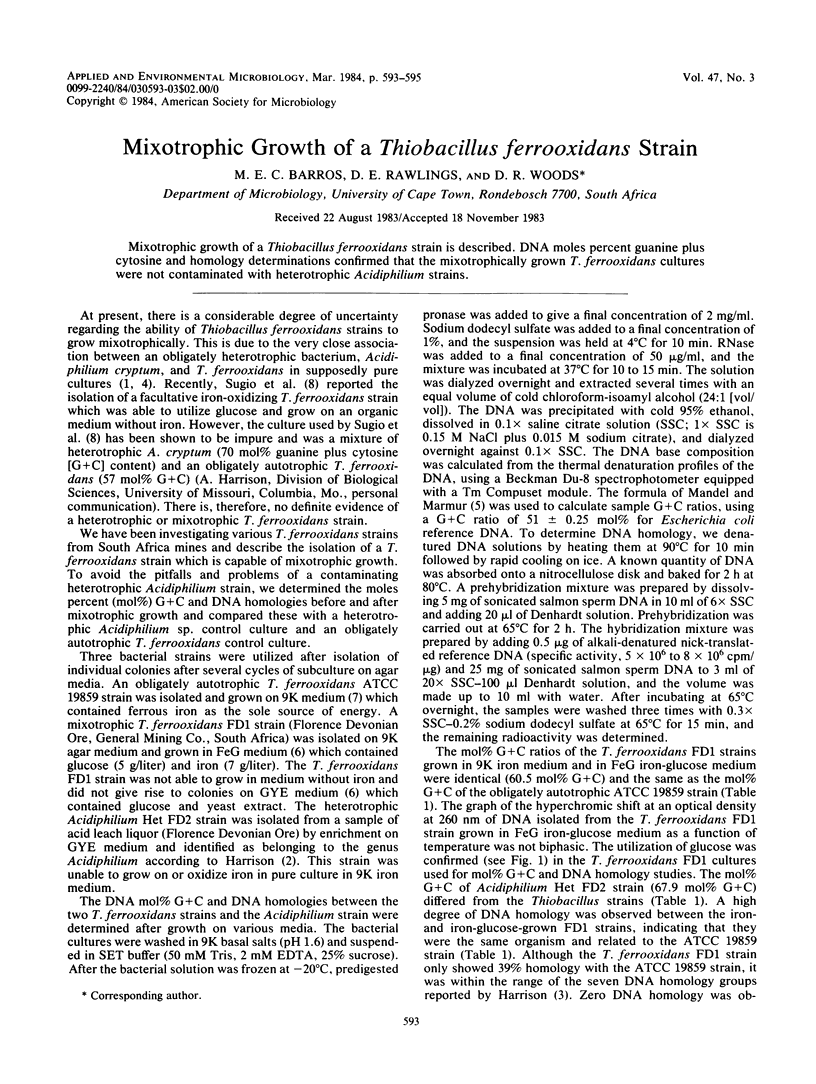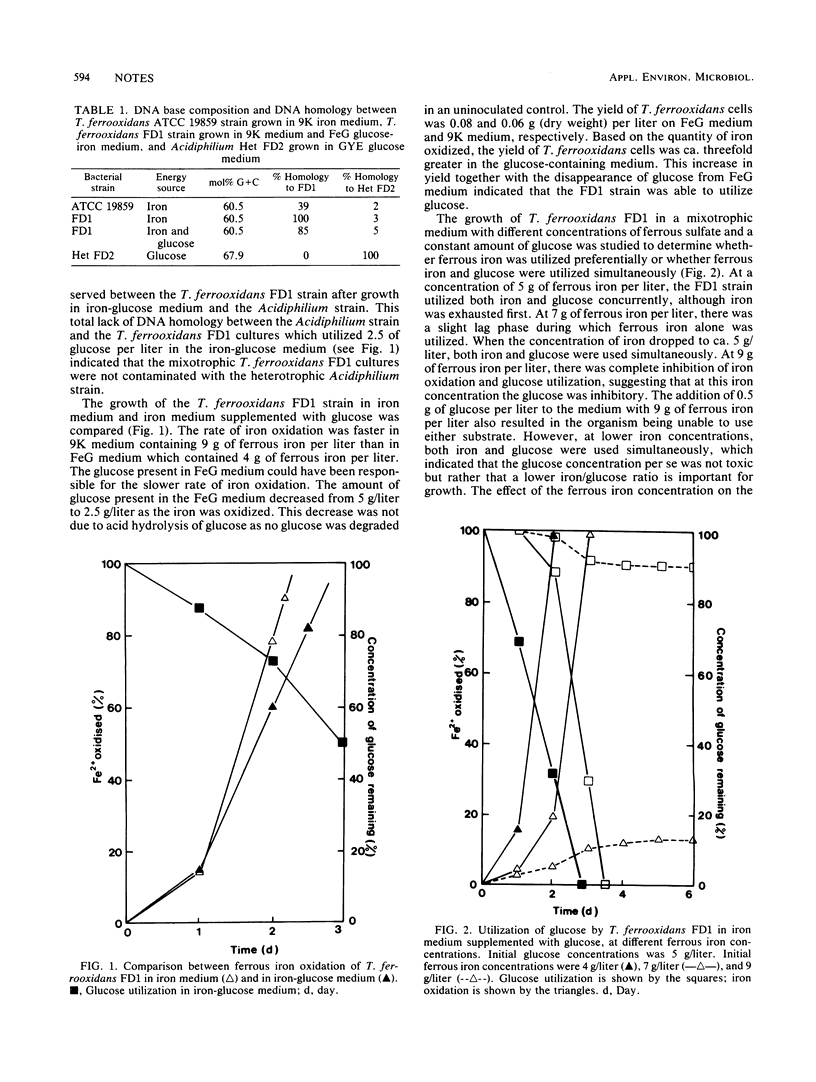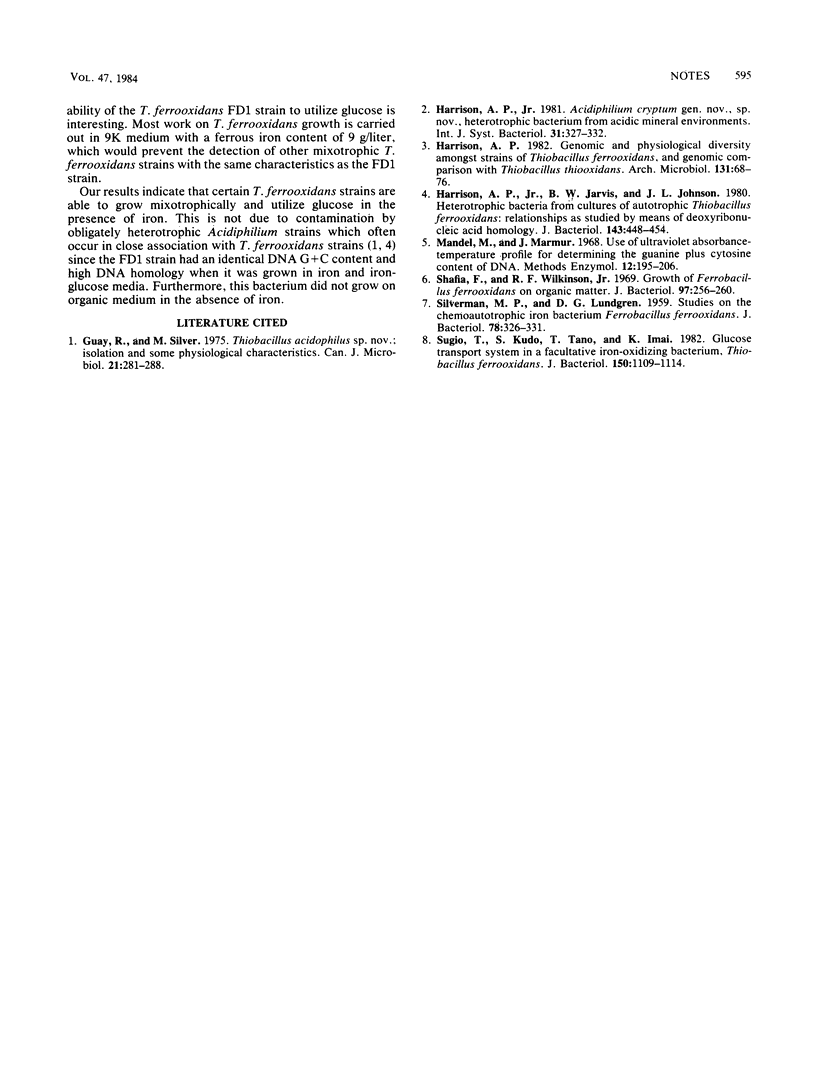Abstract
Mixotrophic growth of a Thiobacillus ferrooxidans strain is described. DNA moles percent guanine plus cytosine and homology determinations confirmed that the mixotrophically grown T. ferrooxidans cultures were not contaminated with heterotrophic Acidiphilium strains.
Full text
PDF


Selected References
These references are in PubMed. This may not be the complete list of references from this article.
- Guay R., Silver M. Thiobacillus acidophilus sp. nov.; isolation and some physiological characteristics. Can J Microbiol. 1975 Mar;21(3):281–288. doi: 10.1139/m75-040. [DOI] [PubMed] [Google Scholar]
- Harrison A. P., Jr, Jarvis B. W., Johnson J. L. Heterotrophic bacteria from cultures of autotrophic Thiobacillus ferrooxidans: relationships as studied by means of deoxyribonucleic acid homology. J Bacteriol. 1980 Jul;143(1):448–454. doi: 10.1128/jb.143.1.448-454.1980. [DOI] [PMC free article] [PubMed] [Google Scholar]
- SILVERMAN M. P., LUNDGREN D. G. Studies on the chemoautotrophic iron bacterium Ferrobacillus ferrooxidans. II. Manometric studies. J Bacteriol. 1959 Sep;78:326–331. doi: 10.1128/jb.78.3.326-331.1959. [DOI] [PMC free article] [PubMed] [Google Scholar]
- Shafia F., Wilkinson R. F., Jr Growth of Ferrobacillus ferrooxidans on organic matter. J Bacteriol. 1969 Jan;97(1):256–260. doi: 10.1128/jb.97.1.256-260.1969. [DOI] [PMC free article] [PubMed] [Google Scholar]
- Sugio T., Kudo S., Tano T., Imai K. Glucose transport system in a facultative iron-oxidizing bacterium, Thiobacillus ferrooxidans. J Bacteriol. 1982 Jun;150(3):1109–1114. doi: 10.1128/jb.150.3.1109-1114.1982. [DOI] [PMC free article] [PubMed] [Google Scholar]


